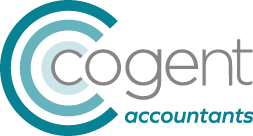Running your own business is scary and challenging (some days it can feel like you are climbing Mount Everest backwards). So, finding a bank that is supportive of your business can make your life a little easier.
It is not an easy decision choosing what bank to use. There are many things to consider and it is worthwhile taking your time to look at all the options. In this article, we give you our top tips on how to choose the right bank account for your business.
2 R’s: Research and Review
The starting point is speaking with the bank where your personal account is held. As an existing customer, they may be able to offer you something that is tailored to your business requirements. However, don’t take the easy route and sign up with them without doing further research first.
Take the time to look at different options and see what introductory offers and extras other banks are can offer you. Most banks typically offer between 18-24 months free banking.
You may feel that using a high street bank offers more protection if something does go wrong, but don’t dismiss the smaller lesser known guys. They could offer you a better service or have lower fees.
In the past doing this research could be time-consuming, but the internet means you can now do this in a matter of hours. A good starting point is to check out comparison websites to get an overall idea of what is available and then look into each option in further detail.
Check out what other people are saying. Look on review sites to see what others say about the service they receive. Banks are great at saying how great they are and how customers are at the heart of their business. It’s hard to believe, but yes, this may not be true! There is nothing more frustrating than bad customer service.
Time
Time is key in business, particularly when it comes to opening a bank account. Unlike personal bank accounts which can be opened online. Most business bank accounts have to be done in person. So don’t delay. Once you decide which bank you want to use, make an appointment with the Bank Manager. It can take 2 weeks or longer just to get an appointment to see him or her. From here, it can take another 2-3 weeks to get the account up and running.
N.B Make sure you have registered your business with Companies House first, as you won’t be able to open a business bank account without a company registration number.
Online or in person
It is important to note the differences in how a bank manages personal bank accounts and business bank accounts. With business bank accounts, fees are levied for paying money in, or taking money out of the account. On top of this, banks add-on monthly service fees as well. However, these charges are often lower if you choose to do the majority of your banking online.
If you are not comfortable with on-line banking and prefer to do your banking in the branch then thoroughly research which bank has the lowest transaction fees to avoid paying excessive charges.
Location
If you will be paying a lot of cheques and money into the account then it will make sense for the bank to have a branch that is local to you. You don’t want to be travelling half an hour each time you need to go the bank.
Extras
It is tempting to choose a bank based solely on their introductory offer and switch banks once the offer ends. We advise you look at the longer term. Switching your business bank account every couple of years could infuriate your clients, as they will have to update their payment systems every time you do this. It will also create extra work for yourself, as you will have to update your invoices with the new bank details every time you switch accounts.
It is also important to consider if you will need extra services from the bank in the future. For example, if you feel later on that you might need an overdraft facility, the bank may be more flexible with existing customers than new ones.
If you need assistance with your company set-up, speak to us today and we will be delighted to talk you through the different options available.

